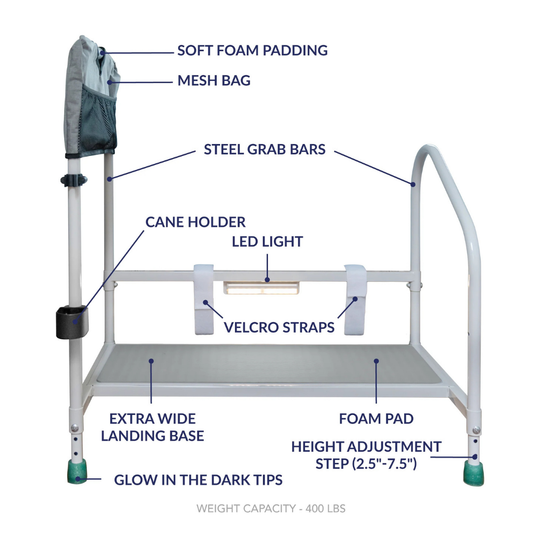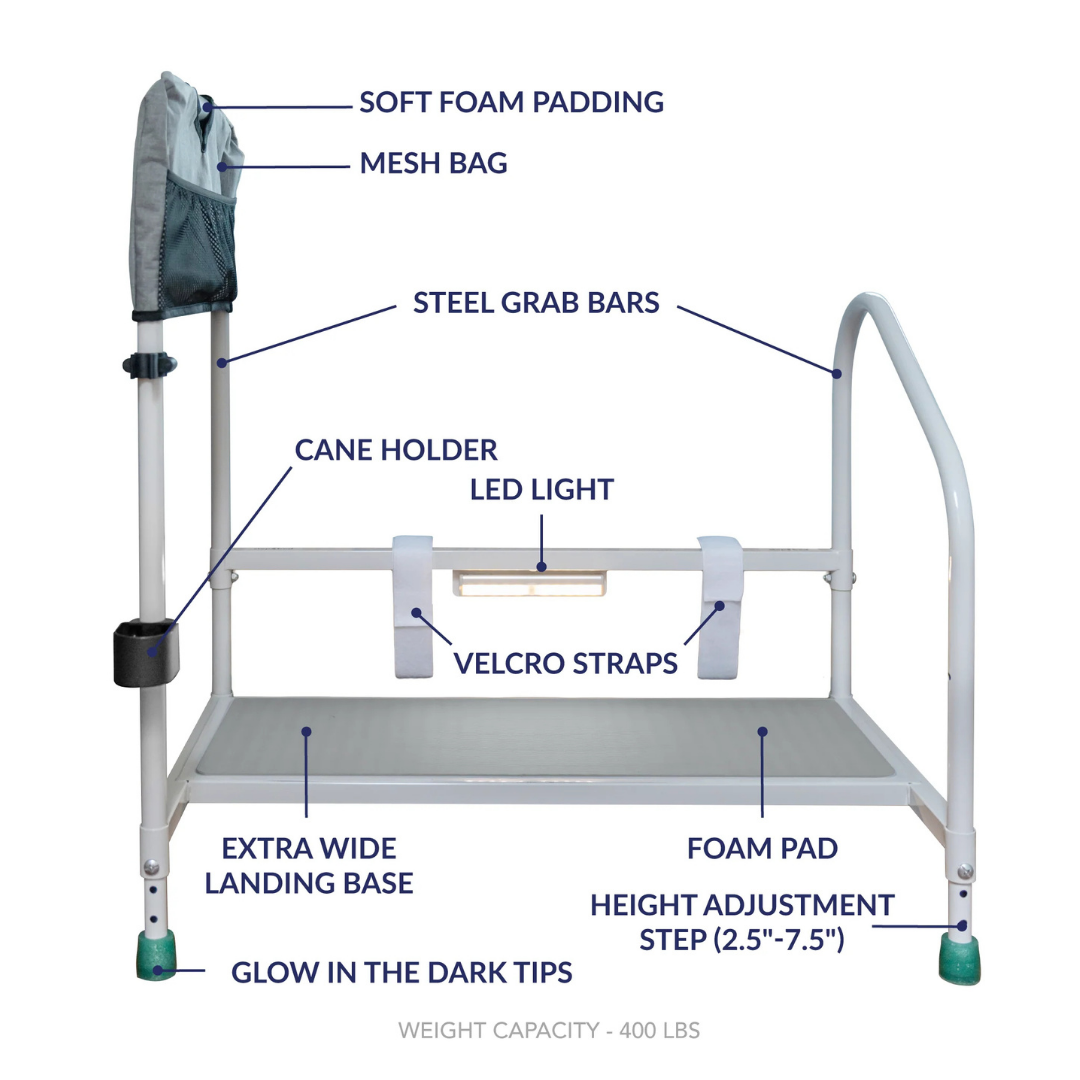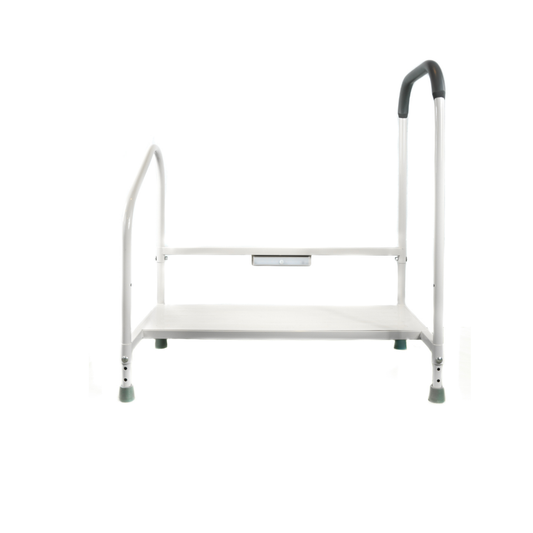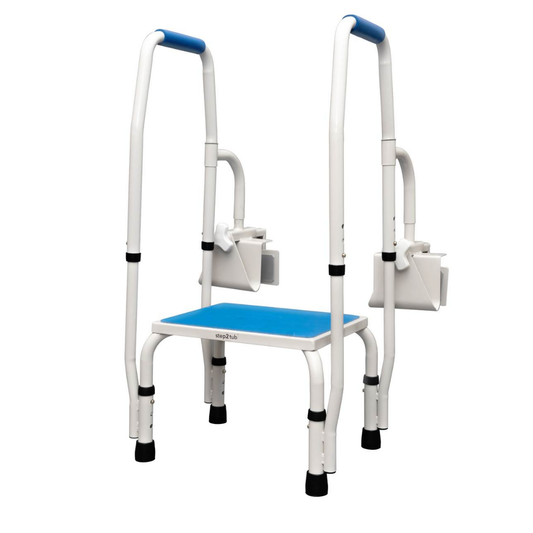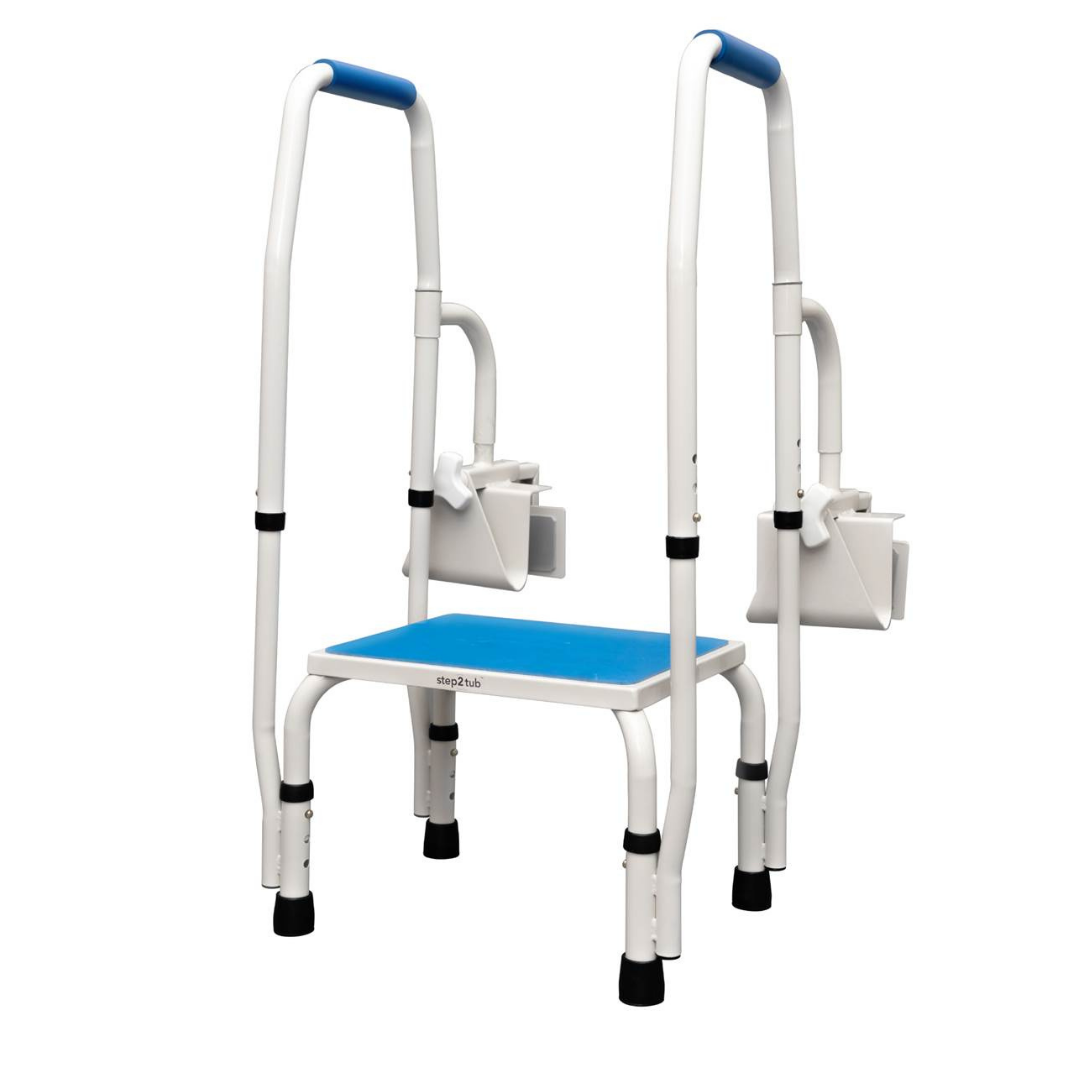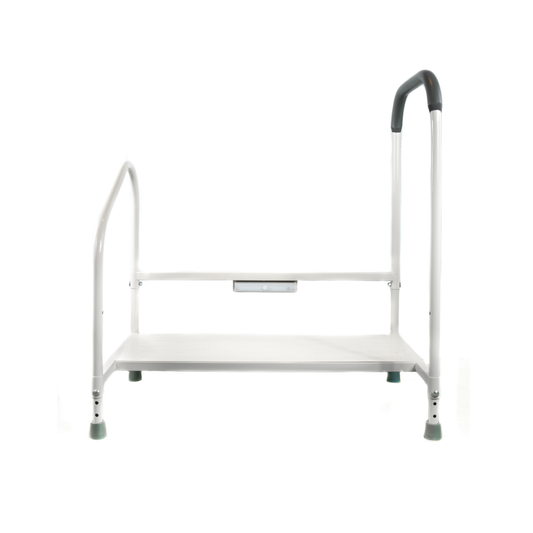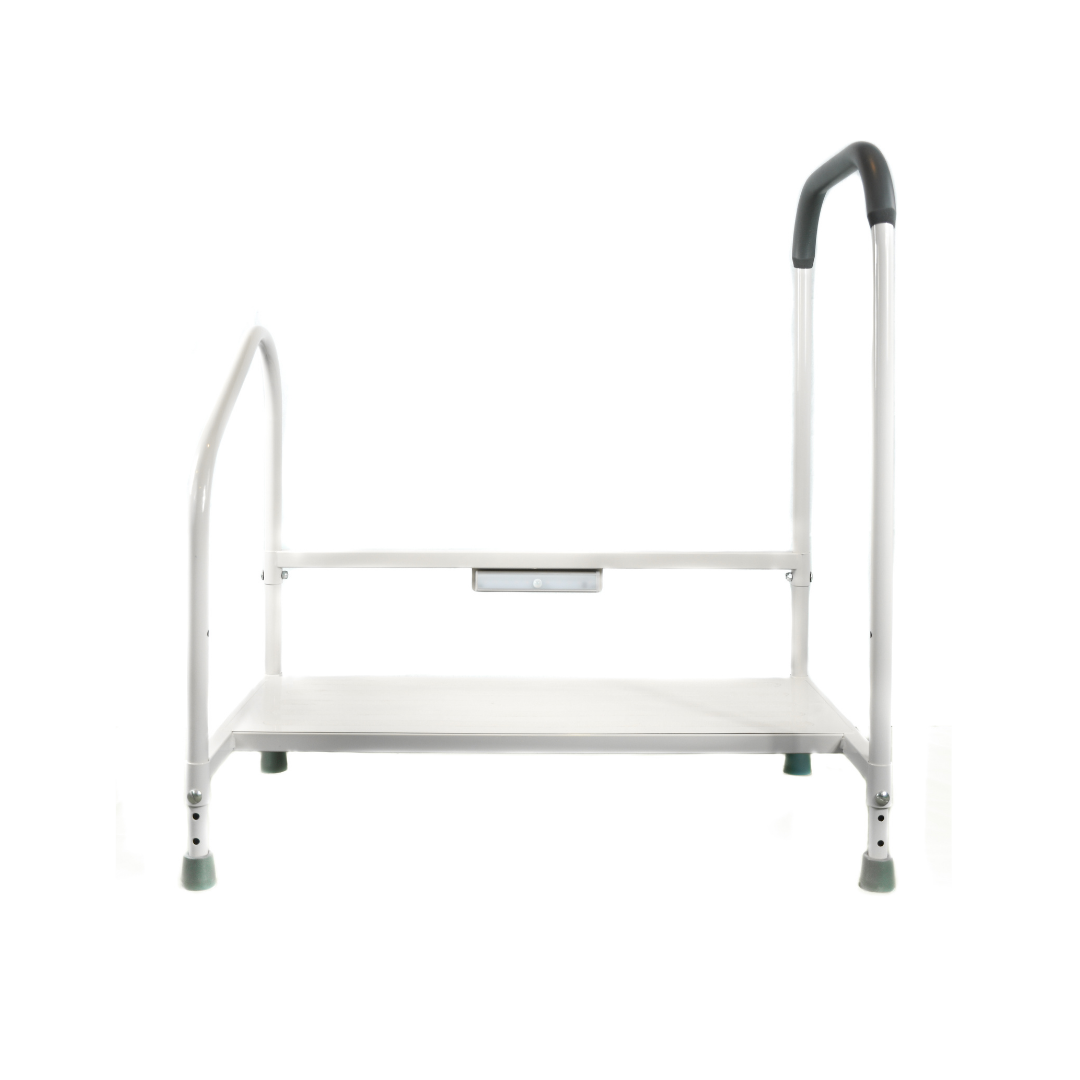Sara Stedy vs Hoyer Up: Complete 2025 Guide to Manual Sit-to-Stand Patient Lifts
Introduction: Understanding Manual Stand Aids for Patient Transfers
Manual sit-to-stand transfer devices have revolutionized patient mobility and caregiver safety in healthcare settings. When evaluating transfer equipment, two industry-leading options consistently emerge: the ARJO Sara Stedy Manual Standing Aid and the Joerns Hoyer Up Sit-to-Stand Compact Manual Patient Lift.
This comprehensive guide compares these trusted patient mobility solutions, helping healthcare professionals, facility managers, and family caregivers make informed purchasing decisions based on clinical needs, patient capabilities, and care environments.
What Are Manual Sit-to-Stand Transfer Aids?
Manual sit-to-stand lifts are non-powered patient transfer devices designed for individuals with partial weight-bearing ability. Unlike full-body patient lifts, stand aids require active patient participation, promoting:
- Functional independence through assisted standing
- Muscle engagement and mobility preservation
- Reduced caregiver injury risk during transfers
- Dignified patient experiences during daily activities
- Easier transfers for toileting, bed-to-chair movements, and repositioning
Both the Sara Stedy and Hoyer Up serve these purposes but through distinctly different design approaches.
ARJO Sara Stedy: Premium Manual Standing Aid for Active Mobility
Sara Stedy Overview and Core Benefits
The ARJO Sara Stedy represents a patient-centered approach to sit-to-stand transfers, emphasizing active participation and early mobilization protocols. This globally recognized stand aid combines ergonomic caregiver features with dignity-promoting patient design.
Primary Advantages:
- Single-caregiver operation with lightweight, intuitive controls
- Pedal-operated chassis adjustment eliminates caregiver bending and kneeling
- DSDC dementia-friendly accreditation (Class 1B) for cognitive care settings
- Dual sizing options accommodate diverse patient populations
- Active participation design with integrated crossbar handle
- Superior maneuverability via low-profile base and responsive castors
Sara Stedy Technical Specifications
Standard Model:
- Patient height range: 4'11" to 6'6" (149-193 cm)
- Weight capacity: 400 lbs (182 kg)
- Optimal for average to tall users
Compact Model:
- Patient height range: 4'6" to 5'8" (138-172 cm)
- Weight capacity: 400 lbs (182 kg)
- Designed for smaller-statured patients
Shared Features:
- Device weight: Approximately 62 lbs (varies by model)
- Manual operation (no power required)
- Pivoting split seat design
- Soft, stabilizing knee support
- Total-lock castor system for transfer security
Innovative Sara Stedy Design Features
The Sara Stedy's engineering focuses on three core principles: patient dignity, caregiver ergonomics, and clinical effectiveness.
Pivoting Split Seat System: The seat swings away to allow natural standing motion, then repositions for seated support during lateral transfers—minimizing shear forces and protecting skin integrity.
Integrated Hand Grips: Built-in handles facilitate easy positioning and steering, even in confined spaces like bathrooms or between furniture.
Dementia-Friendly Certification: DSDC accreditation confirms the Sara Stedy's suitability for patients with cognitive impairments, featuring intuitive design elements that reduce confusion and anxiety.
Ideal Clinical Applications for Sara Stedy
The Sara Stedy excels in environments prioritizing:
- Rehabilitation programs requiring active patient engagement
- Memory care units with dementia-friendly equipment needs
- Physical therapy settings focusing on strength and mobility restoration
- Acute care hospitals implementing early mobilization protocols
- Home care scenarios where space and ease-of-use are paramount
Joerns Hoyer Up: Heavy-Duty Manual Sit-to-Stand Patient Lift
Hoyer Up Overview and Core Benefits
The Joerns Hoyer Up Stand Aid takes a structural approach to patient transfers, offering enhanced weight capacity and rugged construction for demanding care environments. This compact yet robust system supports larger patients while maintaining space efficiency.
Primary Advantages:
- 450 lb weight capacity exceeds most manual stand aids
- Modular 3-piece design for tool-free assembly and transport
- Heavy-duty construction withstands intensive daily use
- Enhanced stability through robust frame engineering
- Compact footprint (24.8" wide) fits through standard doorways
- Low-profile base (4.0" height) accommodates most furniture
Hoyer Up Technical Specifications
Capacity and Dimensions:
- Safe working load: 450 lbs (204 kg)
- Maximum width: 24.8 inches
- Overall length: 37.4 inches
- Maximum height: 43.3 inches
- Base clearance: 4.0 inches
Weight Distribution:
- Total unit weight: 72.8 lbs
- Base section weight: 43 lbs
- Modular assembly for easier handling
Hoyer Up Structural Advantages
Higher Weight Capacity: The 450 lb capacity provides crucial support for bariatric patients or those requiring additional security during transfers.
Modular Construction: The 3-piece design disassembles without tools, facilitating storage in tight spaces and transport between care locations.
Padded Split Seat Platform: Creates a secure, comfortable seating base during transfers while maintaining accessibility for toileting activities.
Push Pad System: Integrated push pad helps caregivers initiate movement with reduced physical effort.
Ideal Clinical Applications for Hoyer Up:
The Hoyer Up performs optimally in:
- Bariatric care programs requiring higher weight capacities
- Long-term care facilities with heavy daily equipment usage
- Multi-site healthcare systems needing portable equipment
- Home healthcare serving larger-statured patients
- Skilled nursing facilities prioritizing durability and longevity
Sara Stedy vs Hoyer Up: Direct Feature Comparison
Weight Capacity and Patient Fit
Sara Stedy: 400 lb capacity with two size options for personalized patient fit Hoyer Up: 450 lb capacity with universal sizing for broader patient population
The Hoyer Up's higher capacity makes it the clear choice for bariatric applications, while the Sara Stedy's dual sizing optimizes fit for specific patient heights.
Device Weight and Maneuverability
Sara Stedy: Approximately 62 lbs with superior maneuverability Hoyer Up: 72.8 lbs with stable, heavy-duty construction
The Sara Stedy's lighter weight enhances caregiver ease-of-use, while the Hoyer Up's additional mass provides stability during transfers of heavier patients.
Operational Ergonomics
Sara Stedy: Pedal-operated chassis requires no caregiver bending Hoyer Up: Manual base adjustment with push pad assistance
The Sara Stedy's foot-pedal system represents an ergonomic advantage, reducing repetitive bending that contributes to caregiver back injuries.
Special Certifications and Design Focus
Sara Stedy: DSDC dementia-friendly accreditation (Class 1B) Hoyer Up: Standard design without special certifications
For memory care units, the Sara Stedy's dementia-friendly certification provides measurable patient benefits and regulatory advantages.
Storage and Transport Considerations
Sara Stedy: Compact profile, stored assembled Hoyer Up: Modular disassembly for space-efficient storage
Facilities with limited storage or multi-location use may prefer the Hoyer Up's modular design, while single-location users benefit from the Sara Stedy's ready-to-use configuration.
Sara Stedy vs Hoyer Up – Side-By-Side Comparison
| Feature | ARJO Sara Stedy / Compact | Joerns Hoyer Up Sit-to-Stand Lift |
|---|---|---|
| Primary Function | Manual stand aid encouraging active participation and early mobilization | Manual sit-to-stand lift for active transfers, toileting, and short-distance transport |
| Weight Capacity | 400 lbs (182 kg) | 450 lbs (204 kg) |
| Patient Height Range | Sara Stedy: 4'11"–6'6" Sara Stedy Compact: 4'6"–5'8" |
Universal sizing for most users with appropriate weight-bearing ability |
| Seat Type | Pivoting split seat for standing engagement and secure seating | Padded swing-away split seat for secure transport |
| Knee Support | Soft, comfortable knee pad | Wide padded knee block for stability |
| Base Adjustment | Pedal-operated chassis legs (no bending required) | Manual base widening mechanism |
| Mobility & Maneuverability | Low-profile castors; excellent in tight spaces | Compact footprint; rugged design but heavier overall |
| Device Weight | Approx. 62 lbs (varies) | 72.8 lbs (base only 43 lbs) |
| Storage | Integrated, non-modular design | 3-piece modular system – no tools required |
| Dementia-Friendly Accreditation | DSDC Design Rating 1B | No DSDC accreditation |
| Best Use Case | Early mobilization, therapy participation, frequent short transfers | Bariatric capability, toileting, short-distance transport, heavy-duty environments |
Clinical Decision Guide: Choosing the Right Stand Aid
Select the ARJO Sara Stedy When:
✓ Patients can actively participate in pulling to stand
✓ Early mobilization and rehabilitation are care priorities
✓ Serving dementia or cognitive impairment populations
✓ Caregiver ergonomics are a top concern
✓ Maneuverability in tight spaces is essential
✓ Multiple patient heights require different sizing options
✓ Weight capacity up to 400 lbs is sufficient
Select the Joerns Hoyer Up When:
✓ Patients weigh between 400-450 lbs
✓ Bariatric care capabilities are required
✓ Equipment will experience heavy daily institutional use
✓ Modular storage and transport are important
✓ Durability and longevity are budget priorities
✓ Enhanced structural stability is needed
✓ Universal sizing simplifies inventory management
Cost Considerations and Return on Investment
While specific pricing varies by vendor and volume, both devices represent significant investments with different value propositions:
Sara Stedy ROI Factors:
- Reduced caregiver injury rates through ergonomic design
- Improved patient outcomes via early mobilization
- Dementia care certification may support regulatory compliance
- Two-size option optimizes patient fit and safety
Hoyer Up ROI Factors:
- Extended equipment lifespan due to heavy-duty construction
- Broader patient population coverage with 450 lb capacity
- Modular design reduces replacement unit needs
- Enhanced durability lowers maintenance costs
Safety Features and Regulatory Compliance
Both devices meet healthcare safety standards, but with different specialized features:
Sara Stedy Safety Elements:
- Total-lock castor system
- Pivoting seat reduces shear forces
- DSDC accreditation for dementia care
- Soft knee padding prevents pressure injuries
Hoyer Up Safety Elements:
- 450 lb tested capacity with safety margin
- Stable, wide-base construction
- Padded split seat for secure positioning
- Push pad for controlled movement initiation
Maintenance and Durability Considerations
Sara Stedy Maintenance:
- Regular castor cleaning and inspection
- Pedal mechanism lubrication
- Seat pivot point maintenance
- Padding condition monitoring
Hoyer Up Maintenance:
- Modular connection point inspection
- Base adjustment mechanism care
- Heavier-duty components typically require less frequent servicing
- Disassembly capability simplifies thorough cleaning
Training Requirements for Clinical Staff
Both devices require staff training, but with different emphases:
Sara Stedy Training Focus:
- Pedal operation techniques
- Patient engagement strategies
- Dementia-specific approach (if applicable)
- Seat pivoting mechanism
Hoyer Up Training Focus:
- Base adjustment procedures
- Weight distribution for heavier patients
- Modular assembly/disassembly
- Push pad utilization
Frequently Asked Questions
Q: Can these devices be used in home care settings? Both are suitable for home use, though the Sara Stedy's lighter weight and maneuverability often make it preferable for residential environments.
Q: Do these lifts work with bariatric patients? The Hoyer Up's 450 lb capacity makes it more suitable for bariatric care, while the Sara Stedy's 400 lb limit suits most standard patient populations.
Q: Are replacement parts readily available? Both ARJO and Joerns maintain extensive parts networks through authorized distributors and service centers.
Q: Which device is better for dementia patients? The Sara Stedy's DSDC accreditation and dementia-friendly design make it the superior choice for cognitive care settings.
Q: Can one caregiver operate both devices safely? Yes, both are designed for single-caregiver operation with properly trained staff and appropriate patient selection.
Conclusion: Making Your Selection
The choice between the ARJO Sara Stedy and Joerns Hoyer Up ultimately depends on your specific clinical needs, patient population, and care environment:
Choose Sara Stedy for active rehabilitation programs, dementia care, ergonomic caregiver benefits, and patients under 400 lbs requiring excellent maneuverability.
Choose Hoyer Up for bariatric applications, heavy institutional use, modular storage requirements, and patients up to 450 lbs needing robust structural support.
Both devices represent quality investments in patient mobility and caregiver safety. The optimal choice aligns with your facility's patient demographics, clinical goals, and operational priorities.
For personalized equipment recommendations or demonstration opportunities, consult with authorized medical equipment distributors specializing in patient mobility solutions.
Ready to Choose the Right Sit-to-Stand Lift?
Explore full product specifications, pricing, and shipping details below:


